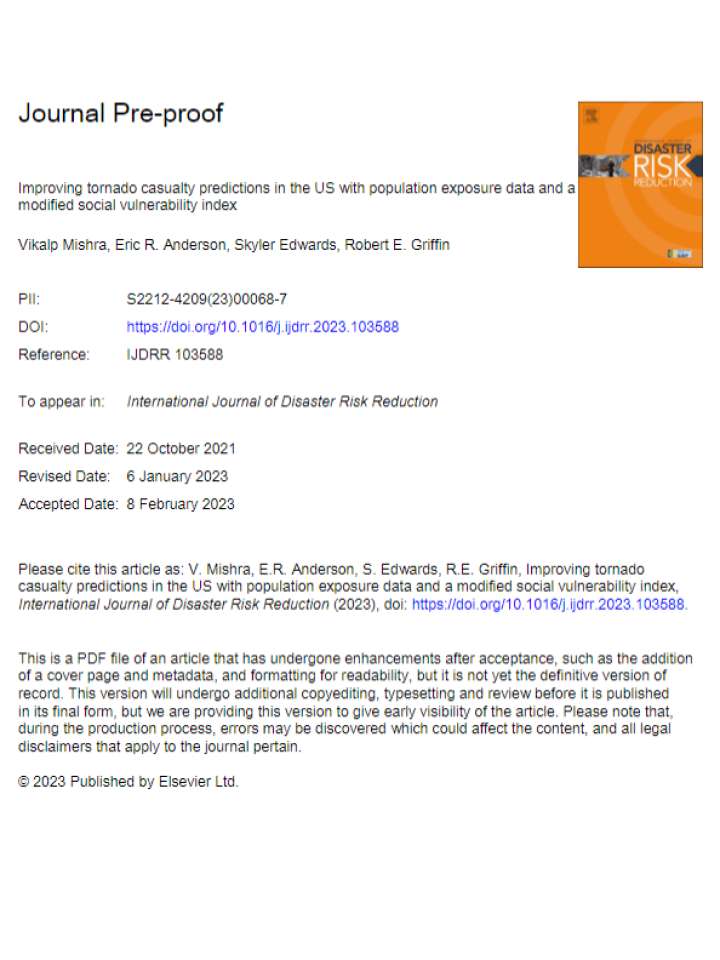Improving tornado casualty predictions in the US with population exposure data and a modified social vulnerability index
In this study, the authors test the ability of negative binomial regression models to predict tornado-induced injuries and fatalities by coupling data on physical characteristics of tornadoes, exposure of populations, and underlying social vulnerability. They also present a modified spatially weighted social vulnerability index (SVI-WT). Tornadoes are frequent and widespread events that often account for hundreds of injuries and fatalities, and millions of dollars in damages. Multiple studies have analyzed tornado climatology and associated exposure; however, fewer have focused on predicting fatalities and injuries by coupling geospatial data on tornado characteristics and underlying social and economic vulnerability.
The researchers used 10-year (2005–2014) tornado data over the continental United States for this analysis. The results of this study indicate that the tornado length, magnitude and nocturnality seem to be the major hazard-related indicators of fatalities (McFadden's Pseudo-R2 ranged from 0.01 to 0.12). Population exposure and SVI-WT are positive and statistically significant in predicting tornado related fatalities and injuries (Pseudo R2 of 0.11–0.18). Although combining SVI-WT with hazard variables does not substantially improve model fit when compared to adding population exposure, combining SVI-WT, hazard and exposure results in better predictions of both injuries and fatalities (Pseudo R2 of 0.17) and is also an improvement on previous similar studies.
Explore further
